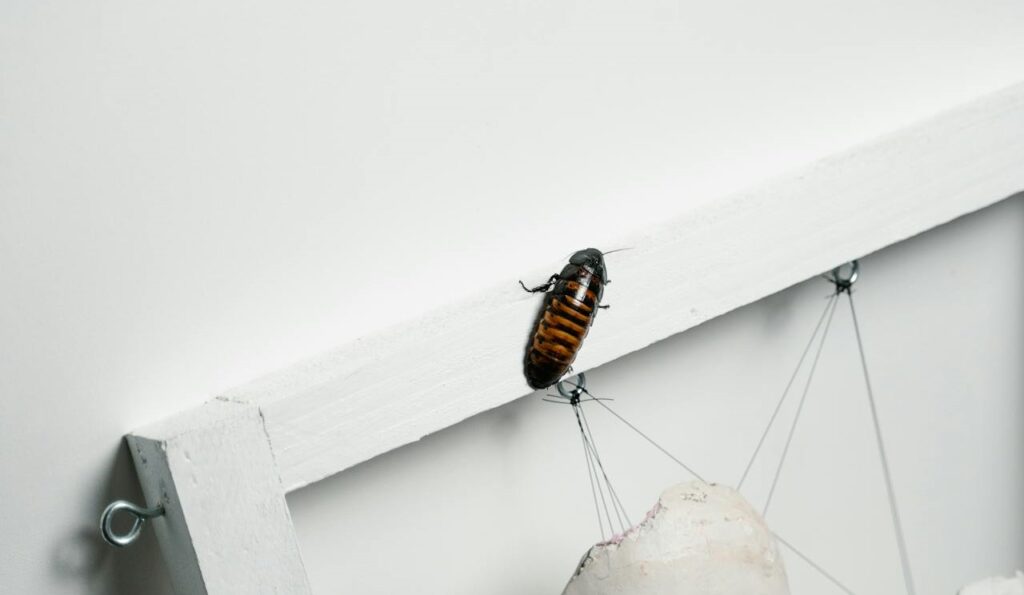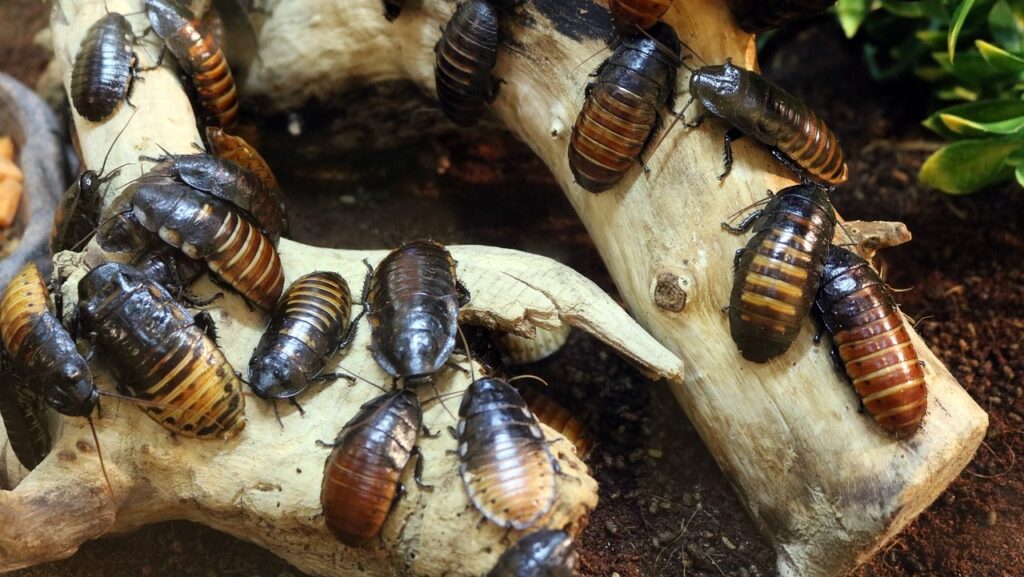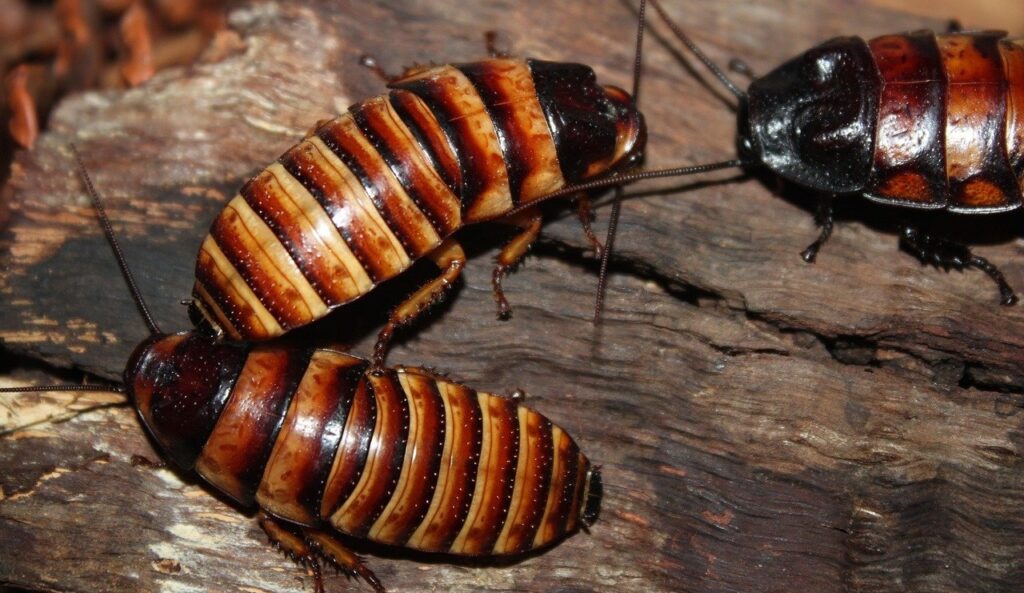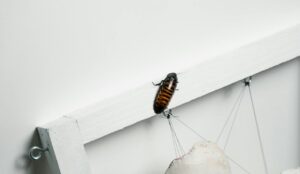Why Are Cockroaches Called Cockroaches? Exploring the Origins of the Name
Cockroaches are one of the most common household pests around the world. They are known for their hardiness and ability to survive in almost any environment. However, have you ever wondered why they are called “cockroaches”?
The term “cockroach” comes from the Spanish word “cucaracha,” which means “an insect that shines light.” This term was later translated into English and has been used to describe this insect since the 1620s. The name may have originated from the shiny exoskeleton of the cockroach, which reflects light and gives it a distinct appearance.

Despite their unappealing reputation, cockroaches have been around for millions of years and are fascinating creatures. They have evolved to survive in a variety of environments and have even been found to be resistant to radiation. Understanding the origins of their name can provide insight into their history and evolution as a species.
Etymology of Cockroaches
Cockroaches are one of the most common pests found in households worldwide. They are known for their resilience, adaptability, and hardiness. But have you ever wondered why they are called cockroaches? In this section, we will explore the historical roots and language influence behind the name.
Historical Roots
According to Explosion.com, the word “cockroach” is derived from the Spanish word “cucaracha.” The term “cucaracha” translates to “an insect that shines the light.” This etymology reflects the shiny exoskeleton of the cockroach, a physical characteristic that is easily observable.
Language Influence
The Spanish language has had a significant influence on the English language, and the word “cockroach” is no exception. As per Cockroach World, the name originates from the Spanish term “cucaracha,” which translates to “an insect that shines light.” This term then evolved into the English version of the word, Cockroach, in the 1620s.
In addition, the word “cockroach” has undergone several changes in its spelling and pronunciation over the years. According to Etymology Online, “Cock-roaches” in the United States are always called “roaches” by the fair sex, for the sake of euphony.
In summary, the name “cockroach” has its roots in the Spanish language, and it evolved over time to become the English version of the word. Its etymology reflects the shiny exoskeleton of the insect, and the word has undergone several changes in its spelling and pronunciation over the years.
Biological Classification
Cockroaches belong to the order Blattodea within the class Insecta. The order Blattodea is divided into six families, including Blattidae, the family to which the common household cockroach belongs.

Taxonomic Hierarchy
The taxonomic hierarchy of cockroaches is as follows:
- Kingdom: Animalia
- Phylum: Arthropoda
- Class: Insecta
- Order: Blattodea
- Family: Blattidae
- Genus: Periplaneta
Within the Blattidae family, there are several species of cockroaches, including the American cockroach (Periplaneta americana) and the German cockroach (Blattella germanica).
Species Nomenclature
Each species of cockroach is assigned a scientific name based on its physical characteristics and evolutionary history. The scientific name of the American cockroach, for example, is Periplaneta americana. The first part of the name, Periplaneta, refers to the genus to which the species belongs, while the second part, americana, refers to the geographic region where the species is commonly found.
In addition to their scientific names, cockroaches are also commonly referred to by their common names, such as “waterbug” or “palmetto bug”. The name “cockroach” is thought to have originated from the Spanish word cucaracha, which means “little bug”.
Overall, the biological classification of cockroaches is a detailed system that categorizes these insects within the animal kingdom based on their physical characteristics and genetic relationships.
Cultural Significance
Cockroaches have a significant place in human culture and have been mentioned in mythology, folklore, and literature throughout history. They have also been used as symbols in modern times.
Mythology and Folklore
In ancient Egypt, cockroaches were considered sacred and were associated with the god Khepri, who was depicted as a beetle or a scarab. The Egyptians believed that Khepri rolled the sun across the sky, much like a dung beetle rolls a ball of dung. The cockroach’s ability to survive in harsh conditions also made it a symbol of resilience and perseverance.
In Hindu mythology, the goddess Kali is often depicted with a necklace made of cockroaches. The necklace represents the fears and doubts that Kali has conquered, symbolizing her strength and power.

Modern Symbolism
In modern times, cockroaches are often used as symbols of disgust, filth, and disease. They are commonly associated with unsanitary living conditions and are often used in horror movies to create a sense of fear and unease.
However, some cultures view cockroaches as a symbol of good luck. In China, for example, it is believed that seeing a cockroach in your home is a sign of good fortune and that killing one will bring bad luck.
Overall, cockroaches have played a significant role in human culture and continue to be a subject of fascination and fear for many people.
Common Misconceptions
There are many misconceptions surrounding cockroaches, some of which have been debunked by scientific research. In this section, we will explore two common misconceptions about cockroaches.
Name Confusions
One of the most common misconceptions about cockroaches is that they are called “water bugs” or “palmetto bugs.” While these names are sometimes used interchangeably with “cockroach,” they actually refer to different insects.
Water bugs are a type of aquatic insect that live in freshwater streams and ponds. They are often mistaken for cockroaches because of their similar appearance, but they are not the same insect.
Palmetto bugs, on the other hand, are a type of large cockroach that are found in the southern United States. They are often called “palmetto bugs” because they are commonly found in palmetto trees. While they are a type of cockroach, they are not a separate species.
Entomological Myths
Another common misconception about cockroaches is that they are indestructible and can survive anything, including a nuclear explosion. While it is true that cockroaches are hardy insects that can survive in harsh conditions, they are not invincible.
In fact, cockroaches are susceptible to many of the same things that other insects are, such as extreme temperatures, lack of food and water, and exposure to pesticides. While they may be able to survive longer than other insects in these conditions, they are not immune to them.
It is also a myth that cockroaches are carriers of disease. While they can carry bacteria and other pathogens on their bodies, they are not a significant threat to human health. In fact, many species of cockroaches are actually beneficial to the environment, as they help to break down organic matter and recycle nutrients.




